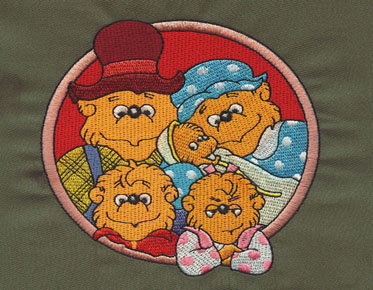Ensure You Get The Perfect Embroidery Digitizing
It is important to understand how the embroidery digitizing process works if you want to provide the best results for your clients with the least amount of trouble and sampling. The following three key pieces of information will make it easier for the first sample to be your only one.
Desired finished size
Machine embroidery is defined by fixed dimensions; thread size and needle diameter determine density, recommended maximum and minimum sewing lengths, and the distance between elements that result in a reliable clear and "clear" stitch. Give clues on the finished size, challenge the physical possibilities in embroidery, this may mean some compromises are needed, but not stating the size required may make your digitizer creation easier to perform and when the small details start When cramming a design, usually the large version isn't ideal.
Fabric specification
You never know how a design will actually work until you sew it into the final garment. A good digitizer can compensate for quirks in any given material, but only if they know the material they're supposed to stitch into. For materials that are unstable, stretchy, towering, high pile or highly textured, digitalization can have a huge impact on the success of a design. Depending on the weight and stretch of the garment, density, order and padding can be adjusted for optimal coverage and minimal distortion. Also, even the horizontal contrast between the thread and the garment can affect how "heavy" the hand the digitizer uses in establishing density. Without the garment information, the digitizer can only create a "generic" file that tries to cover completely under most normal conditions, and will undoubtedly create a heavier, denser rendition of stitches to cover all bases.
Garment Type/Construction
Any experienced embroiderer knows that cap designs work best when ordered from the bottom center of the design, moving up to the brim to properly seat the crown of the cap on the stabilizer and maintain a smooth run and sleeve. Accurate, that is, many embroiderers forget to mention crown height, style, stability and seams that can affect the design when communicating with the digitizer. All of these properties can affect the size and order chosen, and may even change pad and object positions, depending on the structure plaguing the crown. The same goes for all clothing with potentially damaging features. Oddly shaped jackets with heavy seam stitching, slippery multi-layer quilted pieces, bags with a few zippers, insoles and grommets that could interfere with the hoop or run; all of which may require a digitizer to alter the structure of the design , for smoother operation or to avoid potential quality problems. Letting your digitizer know the size and construction of the garment you are using and where the trim must land allows them to provide stitching and setup tips to help resolve construction issues before you begin
If you are considering digitizing your own embroidery designs, it is important
to understand the factors that affect the final product. While all digitizers
will work based on the information you provide, and some standard applications
do not require the exhaustive details discussed here, understanding the factors
that affect results and keeping your digitizer informed can only improve your
final product.



